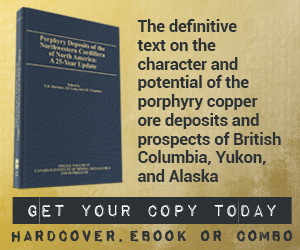Library Magazine Articles Meaning of a current technical report under NI 43-101
Meaning of a current technical report under NI 43-101
Greg Gosson & Laurel Petryk - Dec 2008
Exploration and mining companies fortunate enough to have replenished their treasuries prior to the current credit crunch are likely to be expending a portion of their funds exploring and developing their mineral properties. The new information generated will eventually make technical reports prepared in connection with mineral properties no longer current.
Meaning of current technical report
Guidance is provided in section 4.1 of the Companion Policy to National Instrument 43-101, which states:
“Anytime an issuer is required to file a technical report, that report must be complete and current. If an issuer has a technical report previously filed, and is required to file another technical report because it triggered one of the circumstances listed under Part 4 of the Instrument, the issuer must update the outdated sections of the previously filed report and file a new, complete, current technical report if the contents of the previously filed technical report are no longer current.”
So what is meant by a current technical report? According to Section 1.1 of NI 43-101: “Technical report” means a report prepared and filed in accordance with this Instrument and Form 43-101F1 Technical Report that does not omit any material scientific and technical information in respect of the subject property as of the date of the filing of the report.”
A current technical report must also comply with section 6.1 of NI 43-101 that states:
“A technical report must be prepared on the basis of all available data relevant to the disclosure that it supports.”
Section 6.2 of NI 43-101 requires at least one of the Qualified Persons preparing the report to have completed a current inspection of the mineral property. Section 6.1 of the Companion Policy 43-101CP provides guidance on the meaning of a current personal inspection: “there has been no material change to the scientific and technical information about the property since that personal inspection.”
Material change to information in a technical report
Some examples of material changes in scientific and technical information on a property may be: new drill results, assay results or metallurgical test work. If a company discloses a time frame for developing a new mine, a current technical report must include information as per Item 25 of Form 43-101F1. Changes in assumptions affecting the economic analysis may also be material. Other information on a property that may be relevant, and change materially, includes: mineral title, permits or obligations under the property agreements. Recommendations in the technical report may no longer be current if they are significantly different from what the company is presently telling investors.
Section 2.4 of Companion Policy 43-101CP provides guidance on materiality and how it should be assessed in respect of the mining company as a whole. Material facts are those that would reasonably be expected to have a significant effect on the market price or value of the company’s securities. An assessment of materiality depends on the context. An item of information that is immaterial alone may be material if it is aggregated with other items. For example, when disclosing results of a drilling program the results from a single hole may not be material in itself. However, the results of several holes, in aggregate, could be material to the company.
Certifying a technical report as current
Although management may be in the best position to assess what is material to the company, the Qualified Persons that authored the technical report are required to certify statements that require an assessment of materiality. Section 8.1 (2) of NI 43-101 requires “that the Qualified Person has read this Instrument [NI 43-101] and the technical report has been prepared in compliance with this Instrument.” This means that the technical report must be complete and current as discussed in this article, and the Qualified Person must certify that the technical report contains all scientific and technical information that is required to be disclosed to make the technical report not misleading. If information has materially changed since the last personal inspection of the property, the technical report is not current, and the Qualified Person cannot sign the required certificate.
It is up to the company and Qualified Person to communicate and work together to ensure that all material scientific and technical information is included in the technical report.
About the Authors
Greg Gosson, technical director of AMEC’s Mining & Metals Consulting Group, is a frequent speaker at mining industry forums on scientific and technical disclosure standards.
Laurel Petryk is a senior associate at the Vancouver office of Lang Michener LLP, specializing in corporate finance, mining and regulatory matters.

.png)
